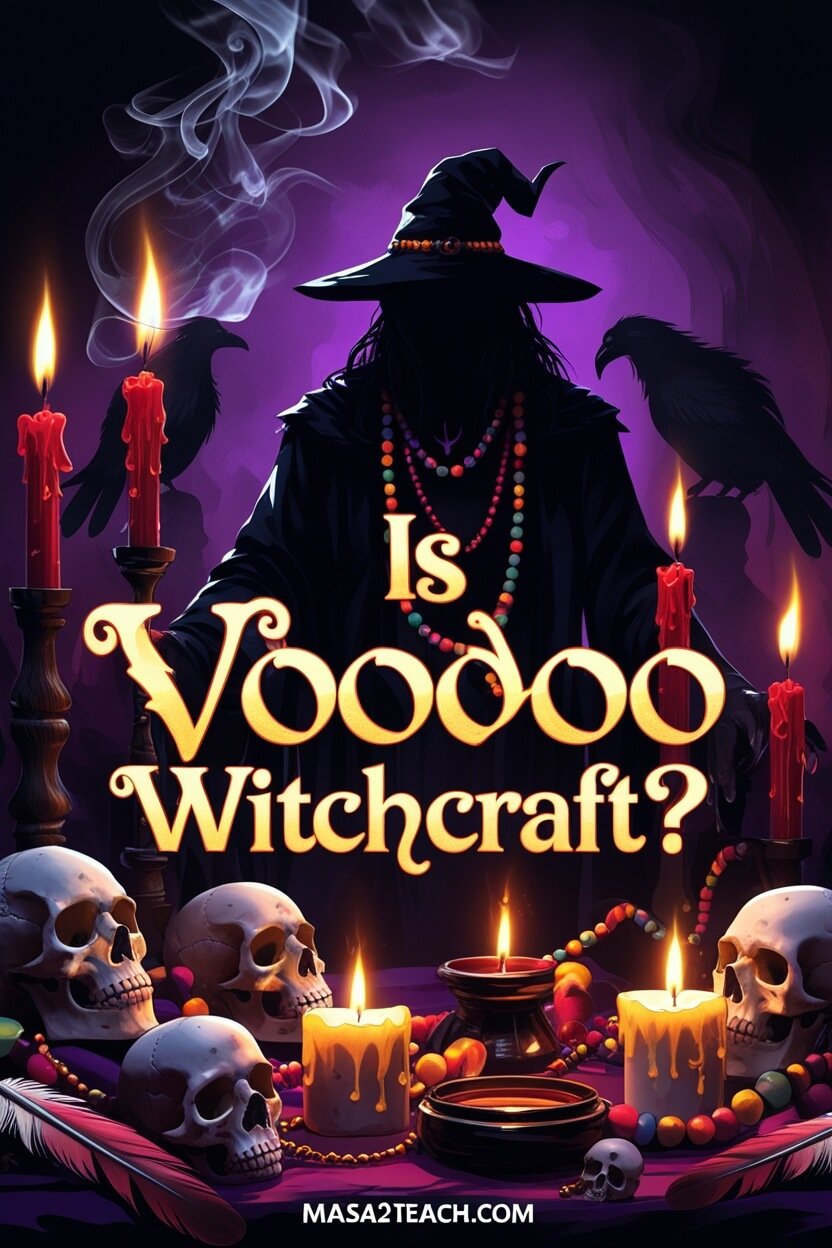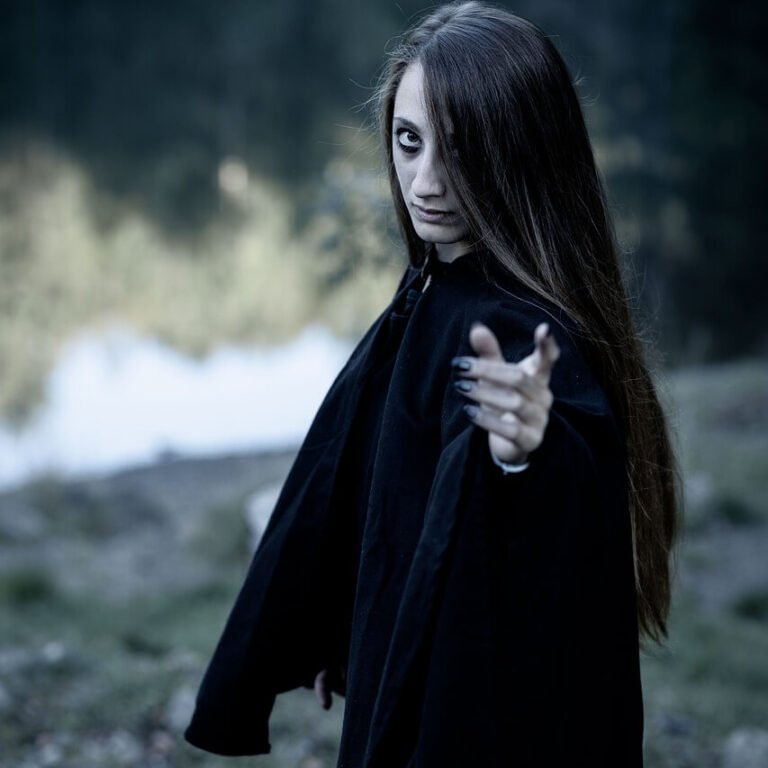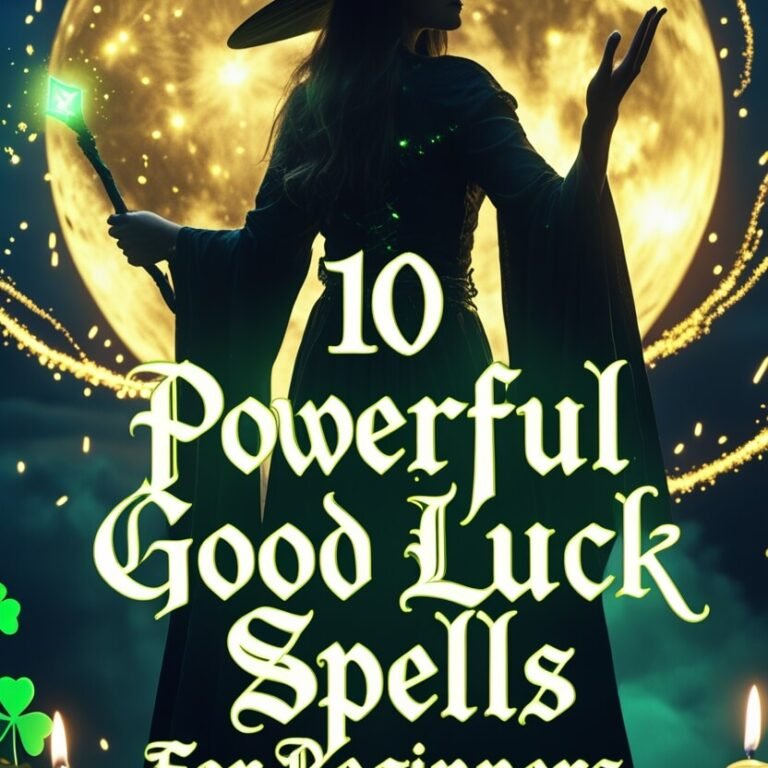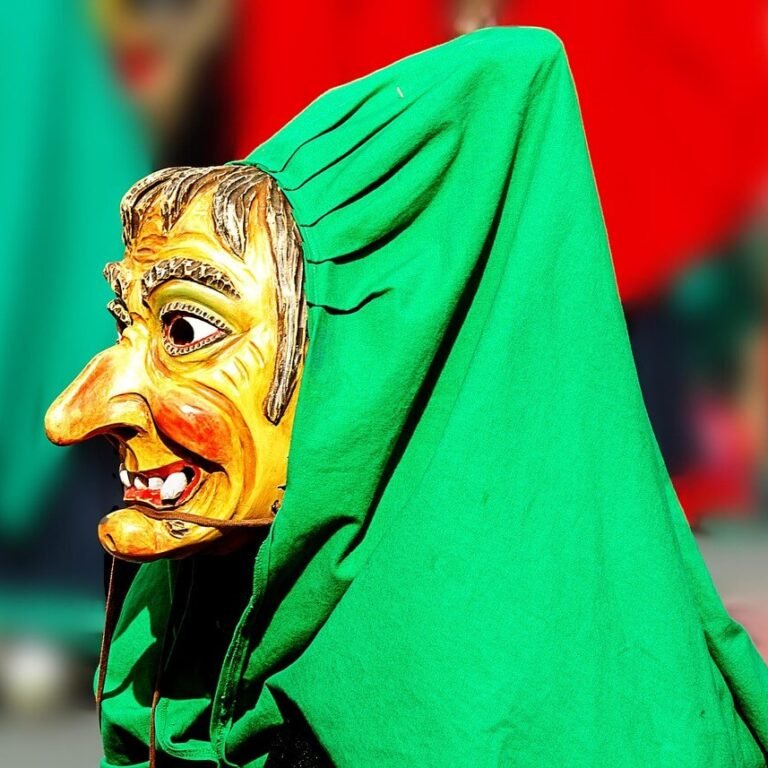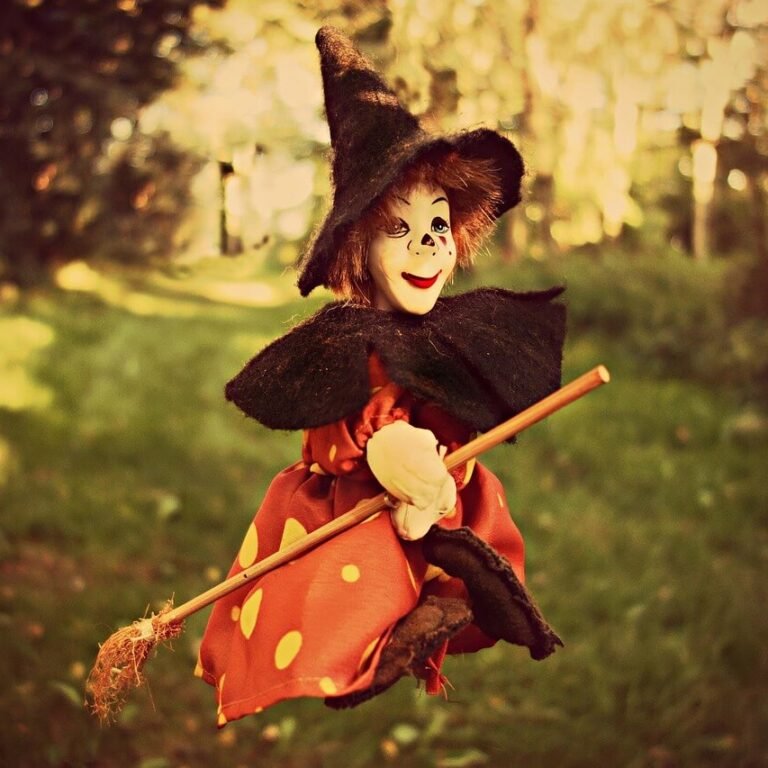Is voodoo witchcraft? Many people wonder if voodoo and witchcraft are the same thing. I have listed 8 reasons why they are totally different.
Is voodoo witchcraft? The simple answer is no – voodoo is not witchcraft. These are two distinct spiritual practices with different origins, beliefs, and purposes. Understanding why they differ helps clear up common confusion about both traditions.
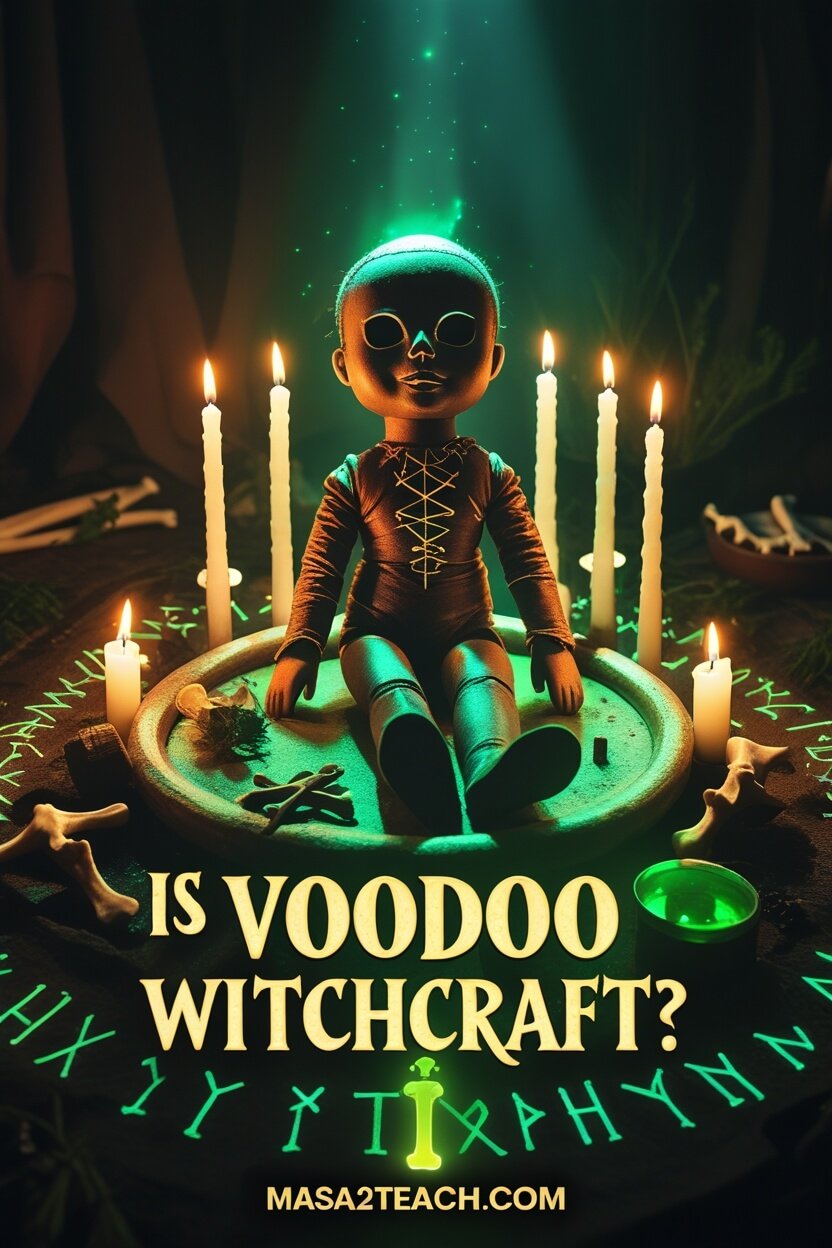
What Is Voodoo?
Voodoo is a structured religion that began in West Africa, particularly in areas now known as Benin, Togo, and Ghana. The name comes from the African word “vodun,” which means spirit or deity. This religious system includes organized beliefs, formal ceremonies, and a clear spiritual hierarchy.
The religion centers around worship of spirits called lwa or loa. These spirits serve as messengers between humans and the supreme creator, Bondye. Each lwa has specific roles, personalities, and areas of influence. Practitioners seek guidance, healing, and protection through these spiritual intermediaries.
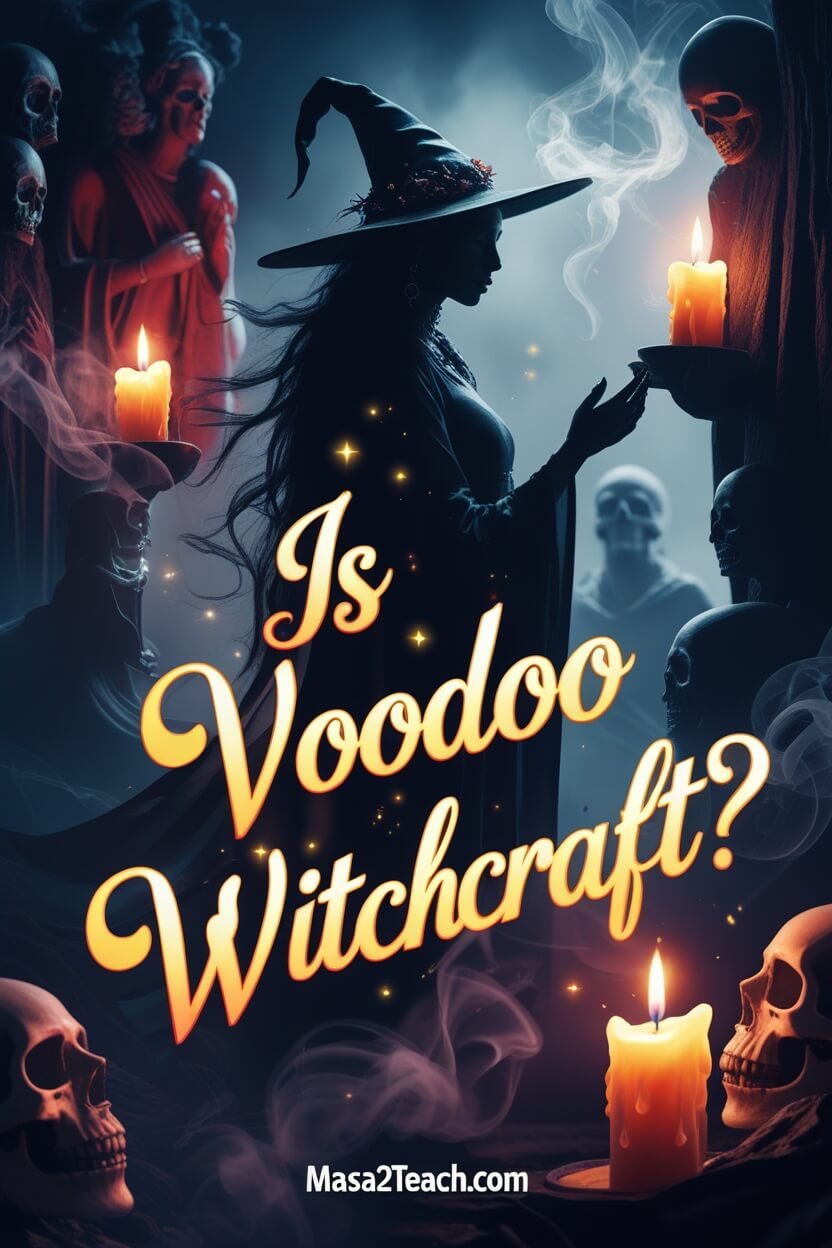
What Is Witchcraft?
Witchcraft represents a personal practice focused on manipulating natural energies to create change. Practitioners, called witches, work with herbs, crystals, moon phases, and elemental forces to cast spells and perform magical workings. This practice emphasizes individual empowerment and direct interaction with spiritual energies.
Witchcraft can exist within many religious frameworks or stand alone as a non-religious practice. Modern witchcraft includes traditions like Wicca, folk magic, and eclectic approaches that combine different magical systems.
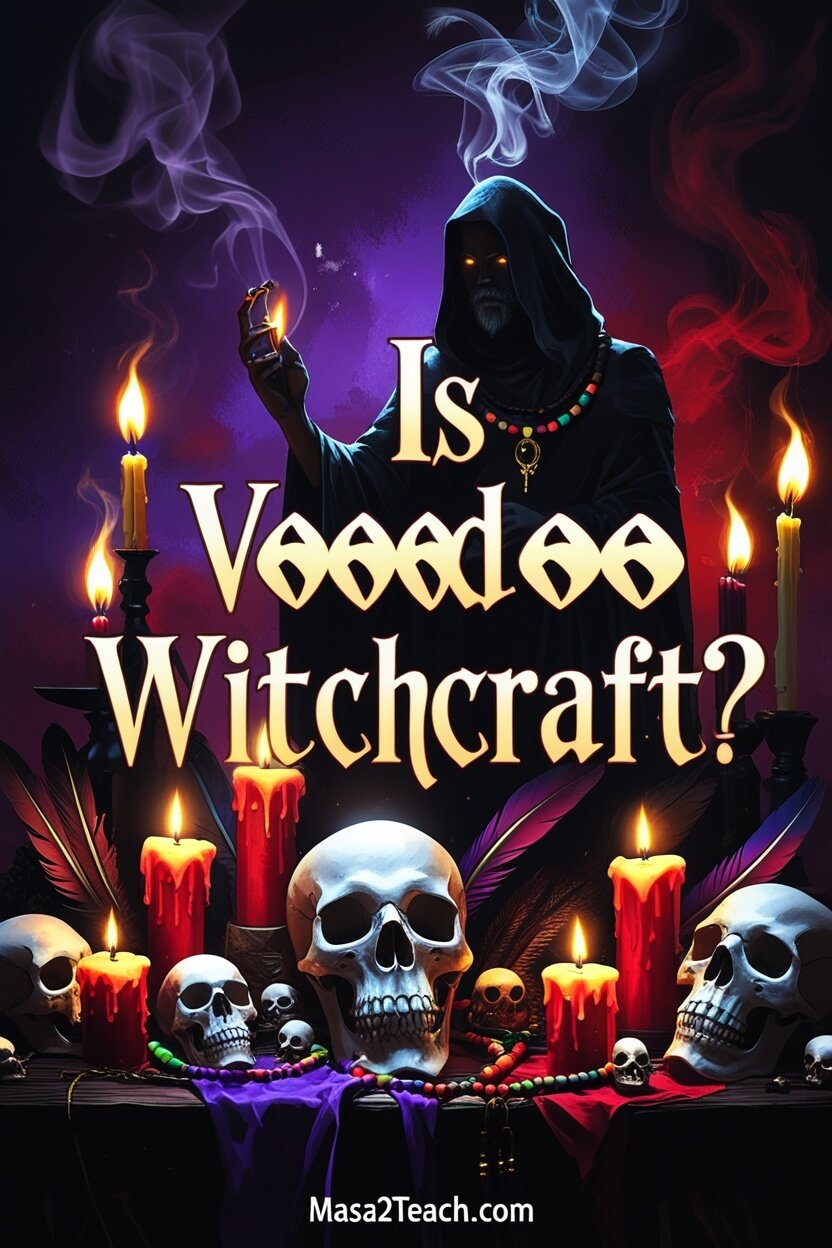
8 Reasons Why Voodoo Is Not Witchcraft
1. Religious Structure vs Individual Practice
Voodoo operates as an organized religion with:
- Formal priesthood (houngans and mambos)
- Structured initiation processes
- Community-based worship
- Established temples and sacred spaces
- Traditional calendar of religious festivals
Witchcraft functions as an individual craft that practitioners adapt to their personal needs. There are no required priests, formal structures, or mandatory community participation.
2. Spiritual Authority and Hierarchy
Voodoo practitioners must work through established spiritual intermediaries – the lwa spirits. These entities have specific protocols, offerings, and proper approaches. Practitioners cannot simply decide how to interact with these spirits; they must follow traditional methods passed down through generations.
related posts:
- Voodoo Love Spells: Your Complete Guide to Attracting True Love Through Ancient Magic
- Witchcraft: A Complete Guide to History, Practices, and Modern Understanding
Witches work directly with spiritual forces, deities, or energies of their choosing. They can create their own relationships with spiritual entities and develop personal magical practices without following preset rules or intermediaries.
3. Cultural Origins and Development
Voodoo maintains strong connections to specific African cultures and their descendants. The religion preserved ancestral traditions despite centuries of suppression during slavery and colonization. Its practices remain tied to particular cultural contexts and community experiences.
Witchcraft draws from diverse traditions worldwide. European folk magic, indigenous practices, ancient pagan religions, and modern reconstructionist movements all contribute to contemporary witchcraft. These varied origins create flexibility in practice and belief.
4. Purpose and Goals
Voodoo serves primarily as a religious system focused on:
- Maintaining connection with ancestors
- Seeking guidance from spiritual beings
- Community healing and protection
- Preserving cultural identity
- Following traditional spiritual laws
Witchcraft aims mainly at:
- Personal empowerment and growth
- Manipulating energy for specific outcomes
- Creating change through magical workings
- Developing individual spiritual abilities
- Achieving personal goals through spellwork
5. Ritual Practices and Methods
Voodoo ceremonies involve specific traditional elements:
- Sacred drumming and rhythmic dancing
- Spirit possession by lwa
- Prescribed offerings for each spirit
- Veves (sacred symbols) drawn with cornmeal
- Group participation and community involvement
Witchcraft rituals typically include:
- Casting protective circles
- Working with elemental energies
- Using personally chosen tools and materials
- Individual or small group practice
- Flexible timing based on personal needs
6. Learning and Training
Voodoo requires formal training under experienced practitioners. Students must learn proper protocols, spirit relationships, and traditional knowledge. This training often takes years and involves initiation ceremonies that mark different levels of understanding.
Witchcraft learning can be self-directed or involve informal mentoring. Books, online resources, and personal experimentation provide valid learning paths. There are no required initiations or formal qualifications needed to practice.
7. Community vs Individual Focus
Voodoo emphasizes community bonds and collective spiritual health. Ceremonies often involve entire communities, and practitioners serve their local spiritual needs. The religion maintains strong social connections and cultural preservation.
Witchcraft focuses primarily on individual spiritual development and personal magical abilities. While witch communities exist, the practice remains largely personal and individually directed.
8. Relationship with Other Religions
Voodoo developed alongside Christianity in many regions, creating syncretic practices that blend both traditions. Many voodoo practitioners also identify as Christian, seeing no conflict between the two belief systems.
Witchcraft can complement various religious beliefs or exist independently. Some witches practice within pagan religions, while others maintain secular approaches to magical work.
Why Understanding These Differences Matters
Proper Recognition
Recognizing voodoo as a legitimate religion rather than a form of witchcraft gives proper respect to its cultural significance and spiritual depth. This understanding helps combat stereotypes and promotes accurate knowledge about African-derived religious traditions.
Cultural Sensitivity
Understanding these distinctions prevents cultural appropriation and promotes respectful engagement with both traditions. Each practice has its own history, protocols, and cultural context that deserve accurate representation.
Educational Value
Clear distinctions help people learn about diverse spiritual practices without confusion or misconceptions. This knowledge builds tolerance and appreciation for different religious and spiritual paths.
Conclusion
Voodoo is not witchcraft because they represent fundamentally different spiritual approaches. Voodoo functions as an organized religion with African roots, structured practices, and community focus. Witchcraft operates as an individual magical practice with diverse origins and personal empowerment goals.
These practices differ in their spiritual hierarchies, cultural origins, learning methods, and primary purposes. While both involve ritual work and spiritual beliefs, their underlying structures and approaches make them distinctly separate traditions.
Understanding why voodoo differs from witchcraft helps us appreciate both practices for their unique contributions to human spirituality. This knowledge promotes respect for diverse spiritual traditions and prevents harmful misconceptions about either practice.
